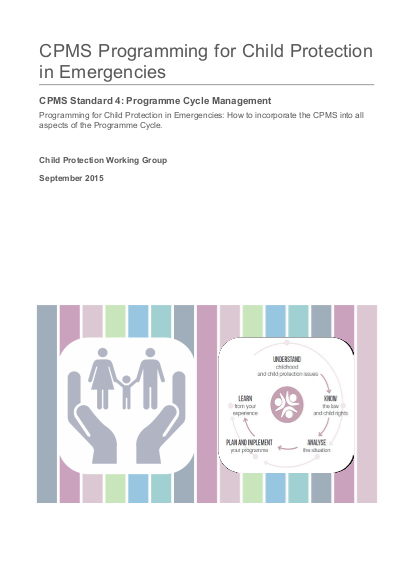
Emergencies pose increased risks of abuse, neglect, exploitation and violence for children; they exacerbate existing threats and undermine protection mechanisms. Establishing programmes that prevent and respond to child protection issues in and as a result of emergencies saves lives.
The Minimum Standards for Child Protection in Humanitarian Action (CPMS) are the global, interagency standards for child protection in emergencies. Developed by the Child Protection Working Group (CPWG), the CPMS were launched in 2012 as a companion to the Sphere Handbook. The Standards establish a common framework for child protection in emergencies, set common principles, define child protection work, compile good practice, outline key actions and indicators to guide improved programming, and enable better advocacy and communication on child protection. The CPMS contain 26 standards: 6 general standards to address child protection needs, 8 standards to ensure a quality child protection response, 4 standards to develop adequate child protection strategies and 8 standards to ensure mainstreaming of child protection in other sectors. The CPMS address the content of child protection programmes, but also, very importantly, how such programmes should be designed, implemented, monitored and evaluated.